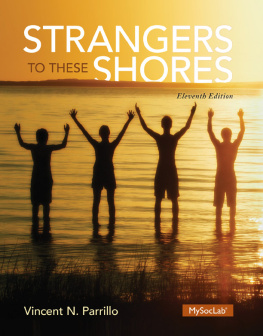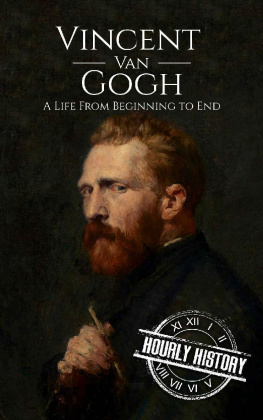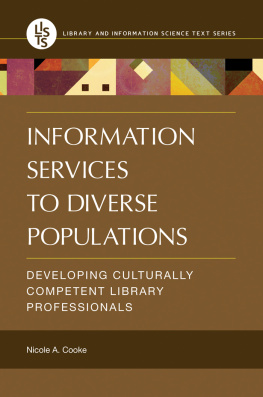First published 2013 by Paradigm Publishers
Published 2016 by Routledge
2 Park Square, Milton Park, Abingdon, Oxon OX14 4RN
711 Third Avenue, New York, NY 10017, USA
Routledge is an imprint of the Taylor & Francis Group, an informa business
Copyright 2013, Taylor & Francis.
All rights reserved. No part of this book may be reprinted or reproduced or utilised in any form or by any electronic, mechanical, or other means, now known or hereafter invented, including photocopying and recording, or in any information storage or retrieval system, without permission in writing from the publishers.
Notice:
Product or corporate names may be trademarks or registered trademarks, and are used only for identification and explanation without intent to infringe.
Library of Congress Cataloging-in-Publication Data for this book is available from the Library of Congress.
Parrillo, Vincent N.
Diversity in America / Vincent N. Parrillo.4th ed.
p. cm.
Includes bibliographical references and index.
ISBN 978-1-61205-253-3 (hc. : alk. paper)
ISBN 978-1-61205-254-0 (pbk. : alk. paper)
1. Cultural pluralismUnited StatesHistory. 2. United StatesRace relations. 3. United StatesEthnic relations. I. Title.
E184.A1P329 2013
305.800973dc23
2012023863
Designed and Typeset by Straight Creek Bookmakers.
ISBN 13: 9781612052533 (hbk)
ISBN 13: 9781612052540 (pbk)
T he fourth edition of this book comes at an important juncture for race and ethnicity in the United States and the interaction of gender relations within that context. Because of this special focus, my use of such terms as diversity and multiculturalism does not include sexual preference, the aged, or the physically challenged, as in other books on diversity with a wider perspective. Although this book examines the subject of multiculturalism, it is not a paean to anti-assimilationists or to anti-pluralists. Instead, it is a moderate approach to a volatile subject with the goal of demonstrating that multiculturalism is neither a new social phenomenon nor a threat to U.S. society.
All of us know something about diversity in this country. We probably learned a little about it in our past, continue to bear witness to it in our present, and may hold expectations about it for the future. Yet although many extol the legacy of our immigrant heritage and/or lament the injustices of our race-relations history, to many we seem to be on the brink of a societal unraveling. As in generations past, voices rise up against immigration, foreign language retention, nonproductive or non-assimilating racial/ethnic groups, and racial/ethnic leaders espousing separatist policies or actions. Similar concerns find expression in Australia, Canada, and Europe, where unprecedented migrations of diverse racial/cultural groups also have made an impact.
THE BACKSTORY TO WRITING THIS BOOK
These voices were the catalyst for my writing the first edition of this book. All of my discussions on the subjects of multiculturalism or diversitywith students and colleagues, government officials, the general public during my various lecture tours abroad for the U.S. Department of States Information Agency (USIA) and its Bureau of International Information Programs (IIP), or listeners and viewers when I appeared on numerous Canadian or U.S. radio/TV call-in showsplayed a role that impelled me to write this book. Between the arguments of voices advocating policies that challenge the dominant culture and those denouncing multiculturalism as a threat to society are, I believe, the ambivalent but concerned feelings of the vast majority.
As a sociologist aware of the patterns of dominant-minority relations, I wanted to dispel misconceptions about our past, misunderstandings about our present, and anxieties about our future that appear to be so prevalent. This book is written for the general reader, but is rooted in the sociological perspective. It is thus an effort to look at U.S. diversity objectively, not with a revisionist or a special advocacy position.
Both pluralism and assimilation have been dual realities throughout the often raucous history of intergroup relations in the United States. This book is an effort to show that, in many ways, what we witness today is a continuation of those dual processes, that the social dynamics we observe are not new, including the efforts of minority separatists and the outcries of alarmists. In fact, most Americans can find examples of the duality of pluralism and assimilation in their own family histories.
A PERSONAL EXAMPLE
To illustrate the last point, when my grandmother, Mary Kerr, came to the United States from Ireland, many native-born Americans still looked on the Irish with scorn and dismay. By then the large presence of Irish Catholics had been a reality for a couple of generations, but other Americans remained convinced that this inferior group tainted the purity of the American character. Undaunted, the Irish persevered, overcoming religious bigotry and flagrant discrimination, to become an integral part of American society.
Andrew Kohn, my maternal grandfather, typified the immigrant saga. The son of German immigrants who lived in Paterson, New Jersey, in the mid-19th century, he (like thousands of other first- and second-generation Americans) worked in the citys textile mills, but he also eventually opened his own business. He became a political leader and one of his greatest satisfactions as an American was personally escorting presidential candidate Woodrow Wilson to a major political rally in Paterson, New Jersey, in 1912.
Andrew and Mary Kerr Kohn had 14 children, several of whom died young, and they also adopted three newly orphaned kin. Betty, my mother, was their second-youngest child and, as a beautiful and personable woman, had many Irish American suitors. All of her older sisters married Irish Americans, each a successful middle-class businessman. But Betty, resisting family pressures to do likewise, broke the endogamy pattern when she married my father, Vince, a second-generation Italian American who was the second of three sons born to Nicola and Giovanna Infante Parrillo.
Like Bettys mother, Mary, Vinces mother died when he was a youth. Nicola had been a highly respected Italian community leader, entrepreneur, and publisher of an Italian weekly newspaper before his death, but Vinces family background hardly impressed Bettys family. They were aghast at her even dating Vince, let alone marrying him, convinced that he and his familyin fact, all Italianswere beneath them. Although restrictive immigration laws a decade earlier had drastically reduced the flow of new arrivals from southern, central, and eastern Europe, these groupsparticularly Italians and Jewsremained stigmatized as personifying all that was wrong with America. They had replaced the Irish as the subculture deemed unassimilable. Betty, however, was an independent and open-minded person who rejected such prejudices.










